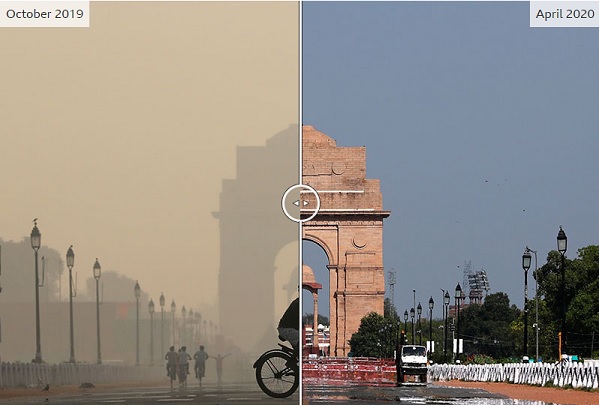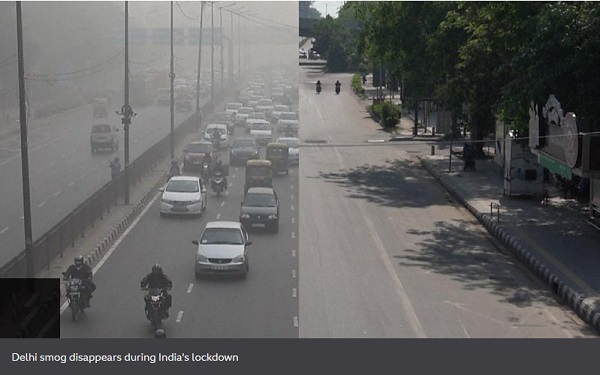In our monthly feature, Then and Now, we reveal some of the ways that planet Earth has been changing against the backdrop of a warming world. Air pollution has long been one of the biggest killers, claiming an estimated seven million victims annually. However, the Covid-19 global pandemic showed how quickly we could clear the air once we cut the number of journeys we made...
Air quality at India Gate in Delhi
Drag the button to see the shift from smog to clean air

Air pollution has long been one of the most severe forms of environmental damage.
Figures from the World Health Organization (WHO) estimate that air pollution kills seven million people worldwide every year.
Its data also shows that 9 out of 10 people breathe air that exceeds WHO guideline limits on high levels of pollutants.
Stark difference
Emissions from fuel combustion account for almost a quarter of CO2 emissions from human activities.
So the impact of lockdowns on transport around the globe in the Covid-19 pandemic has been stark.
According to the International Energy Agency, average activity on the world's roads fell by almost 50% compared with 2019.
The improvement in air quality was clear to see.

In a short space of time, urban areas were recording massive reductions in a range of pollutants associated with internal combustion engines.
Data collected by the UK's National Centre for Atmospheric Science shows marked reductions in nitrogen dioxide (NO2) and in particulate matter (PM2.5) across 10 cities.
In India, people took to social media to post images of clear skies after an estimated 90% of road journeys stopped during the lockdown.
Speaking in April, Sunil Dahiya from the Centre for Research on Energy and Clean Air told BBC News: "The current crisis has shown us that clear skies and breathable air can be achieved very fast if concrete action is taken to reduce burning of fossil fuels."
However, as quickly as air quality improved during lockdowns, so it appears to have returned to normal just as fast once lockdowns were eased or lifted.

